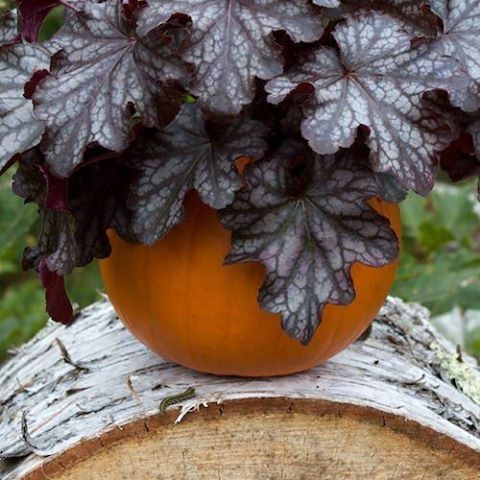With the arrival of October, we can start to hope for rain. The prospect of rain can trigger a lot of activity in the garden. It is a good time to add native plants, harvest summer vegetables, plant a winter garden, take care of fall maintenance and plan for next year.
Native plants can add beauty to your garden. Warm soil and the coming rains will encourage them to settle in. They need less water and fertilizer and typically less care than the plants you would find in a typical English-style garden. Native plants also provide habitat for native birds, bees and toads and a place for beneficial insects to spend the winter.
Finish harvesting your summer vegetables this month. With shorter days and cooler nights, growth in the garden slows. So dig your carrots, beets, turnips and potatoes; bring in the winter squash and pumpkins to harden off, and pick the last of the fruits and vegetables that frost could damage.
Rake up leaves, trimmings, grass clippings and spent annuals for a new compost pile. The cleanup will minimize the places where pests could overwinter. Enjoy the last sun-warmed tomatoes and spicy peppers, while thinking about the tender peas and lettuces you will harvest from your winter garden.
Prepare beds for winter crops, then plant onion, garlic and shallot sets. Plant broccoli and cauliflower seedlings now and sow seeds for chard, lettuce, fava beans, parsnips, turnips, rutabagas, beets, carrots, radishes, spinach and onions. You can sow all of these seeds directly in the ground. Drape the planted area with row cover to protect the young seedlings from cabbage moths and the seeds from birds and other critters. Water as necessary until the rains come.
Watch for snails and slugs on new plants. Remove by hand or use a pet- and people-safe product. If you find aphids, wash them off with a strong spray from your hose. Or use a spray bottle filled with a mild soap solution; I make mine with a little mild dish soap, which smothers the critters.
October is also a good time to plant container-grown trees, vines and shrubs as well as artichoke and asparagus crowns. You can start a new lawn now or reseed any thin, bare spots in an existing lawn. In anticipation of bare-root planting in December and January, dig holes now for the new plants. If we get the rain we are hoping for, the soil may be too wet to dig then.
Now is also a good time to update your garden's infrastructure. Install drains and downspouts to direct water away from garden beds. Standing water can damage the roots of shrubs and perennials and cause rot in tree crowns.
Thinking about adding raised beds to your garden? October is a good time to build them and prepare the soil. In beds that you aren't planning to use this winter, amend the soil by planting a cover crop to add organic material, fix nitrogen and control erosion. Good cover-crop choices include barley, oats, vetch and fava beans. Alternatively, amend beds with compost and fertilizer and then plant your winter garden.
While the ground is still dry, order a load of compost. Mound it two to three inches deep in planting beds and under shrubs and trees out to the drip line. Keep mulch away from tree trunks to prevent rot. The compost will help smother weeds and will decompose over winter to prepare the beds for spring planting.
Tackle overgrown perennials now. Dig up and divide clumps of Shasta daisies, phlox, daylilies and agapanthus. Your garden will look new and fresh in the spring, and you may have extra plants to share with neighbors and friends. Dig up dahlias once the tops have dried and store them in a dry place where they won't freeze.
With these chores out of the way, you will be ready to relax and enjoy the rain, flipping through all those garden catalogs that will soon show up in your mailbox.
Free workshops: Napa County Master Gardeners will assist with a free workshop on “Perfect Plant Picks” on Monday, October 6, from 6:30 p.m. to 8:30 p.m., at the Yountville Community Hall, 6516 Washington Street, Yountville. See how a drought-tolerant garden can be colorful and beautiful. Dozens of plants will be on display, including California natives. Registration is required. To register, call 707-252-4188 X116 or e-mail frances@naparcd.org.
Workshop: Napa County Master Gardeners will lead a workshop titled “Be Successful with Citrus” on Saturday, October 11, from 9:30 a.m. to 11:30 a.m., at the American Canyon Senior Multi-Use Center, 2185 Elliott Drive, American Canyon. Get the information you need to succeed with your new or mature citrus trees. Learn about choosing varieties, planting, fertilizing and protecting from frost. Online registration (credit card only); Mail-in registration (cash or check only). The workshop will be repeated on Saturday, October 18, from 9:30 am to 11:30 am. Register online for the Calistoga workshop.
Master Gardeners are volunteers who help the University of California reach the gardening public with home gardening information. Napa County Master Gardeners ( http://ucanr.org/ucmgnapa/) are available to answer gardening questions in person or by phone, Monday, Wednesday and Friday, 9 a.m. to Noon, at the U. C. Cooperative Extension office, 1710 Soscol Avenue, Suite 4, Napa, 707-253-4143, or from outside City of Napa toll-free at 877-279-3065. Or e-mail your garden questions by following the guidelines on our web site. Click on Napa, then on Have Garden Questions? Find us on Facebook under UC Master Gardeners of Napa County.
